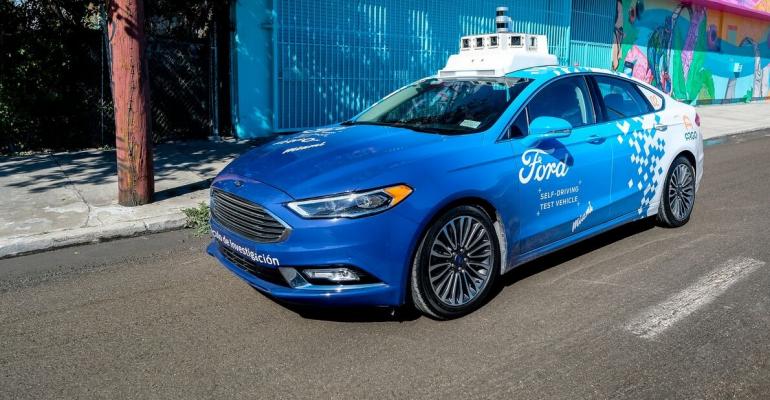NHTSA has guided automotive safety in the U.S. with a clear vision and roadmap for the future.
The agency recently announced it is developing new regulations for autonomous vehicles and has requested that the public voice their concerns regarding AV safety.
The purpose of the review of current regulatory requirements is to “govern the safe behavior of automated driving systems in the future,” and this would be an opportunity for the public to share their thoughts on the direction of AV development.
“This rulemaking will help address legitimate public concerns about safety, security and privacy without hampering innovation in the development of automated driving systems,” Transportation Secretary Elaine Chao says.
The goal is to establish new rules for autonomous vehicles before many of them are on the road. Four areas NHTSA is focusing on for autonomous-vehicle development are sensing, perception, planning and control.
The agency is looking closely at how AVs use sensors to understand what is happening around the vehicle, perceive road signs and other objects on the road such as pedestrians or bikers, how an AV makes decisions based on the information that is sensed and perceived, and how the vehicle is able to execute those decisions.
Today, an advanced sensor called 4D Imaging Radar can provide some of the safety precautions in the key areas NHTSA is looking at closely. 4D Imaging Radar with 2K resolution can detect moving and stationary objects of all sizes around the vehicle so road users such as pedestrians, scooters and bicyclists can be detected immediately, avoiding potential vehicle collisions or fatalities.
Using ultra-high-resolution 4D Imaging Radar also can guarantee the vehicle will have the same level of detection in all weather conditions, including snow or sleet, or under any lighting condition, such as in a dark tunnel.
This type of coverage is crucial for driver-assistance technologies and AVs to have in place to ensure public safety. Because 4D Imaging Radar is imperative for the safety and future of autonomous vehicles, automakers throughout the world are basing their next-generation radar systems on this technology.
 4D Imaging Radar also addresses NHTSA’s second area of concern: perception. The solution has superior perception abilities that can localize the vehicle in its lane and provide precise free space mapping, which is a detailed map of the space around the vehicle used by the perception system to make decisions regarding which areas are drivable versus non-drivable.
4D Imaging Radar also addresses NHTSA’s second area of concern: perception. The solution has superior perception abilities that can localize the vehicle in its lane and provide precise free space mapping, which is a detailed map of the space around the vehicle used by the perception system to make decisions regarding which areas are drivable versus non-drivable.
Planning and control can both be effective only if the sensing and perception capabilities are accurate and can provide the correct information to the AV so it can make and execute precise decisions.
With 4D Imaging Radar, the public can have more peace of mind that there are current technologies whose advanced sensing and perception abilities can pave the way to a zero-road-fatality vision for the auto industry.
Taking a look at sensors to create new AV regulations makes a whole lot of sense.

Kobi Marenko is CEO of Arbe, a provider of autonomous-vehicle and advanced driver-assistance systems technology.





